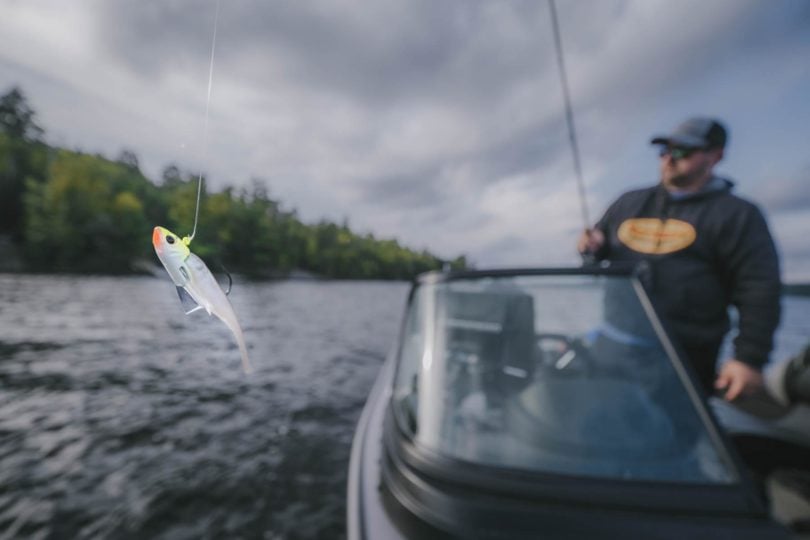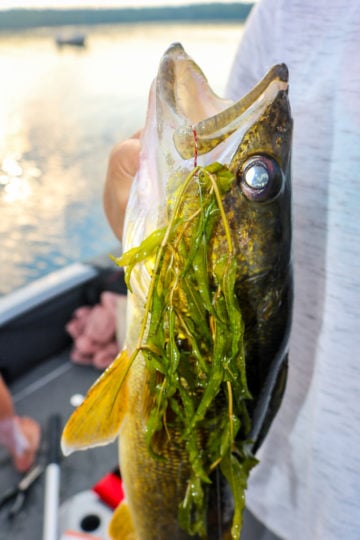
As a young angler, I hated weeds of all kinds to the point of fishing anywhere else I could to avoid them. They seemed at the time a needless frustration of fishing. As bluegills captured my interest, and eventually bass, walleyes, and a host of other species, I came like most anglers to develop more of a love/hate relationship with them. I observed times when they were crucial to finding and catching fish, though they still seemed an impediment to the actual “catching” part. Fast forward to today, and they’re vegetation, mostly because it does away with the negative connotations of the other terms, and embraces them as a collection of fishy habitat. Yet, not all veg is created equal and depending on your species of interest, there are definitely some preferred types over others.
Pads – There are a number of floating-leaf plants in freshwater that most anglers refer to as “lily pads.” Rightly so, as the majority of them have a flowering lily as a portion of the plant, though the pads are what provide the shade and haven that bass and panfish species enjoy. These broad, green floating platforms serve as the perfect rest or ledge for frogs, weedless-rigged plastics, and other topwater presentations, while the gaps in pads provide the perfect ambush point for all species. Edges of pad fields also provide valuable ambush points for predators and serve as great locations for early morning or evening crappie and bluegill fishing. Make no mistake about it, pads equal fish throughout the entire spring and even summer warm-water periods.
Anglers can focus on vacant holes of any kind of pad, as fish focus on these edges and variations. Many lakes are studded with them, putting even more focus on gaps in them, or inside turns and points on the edges of them. Some lakes even have them along sunken humps or mid-lake structures, making those spots even more valuable than back-bay portions because of their access to deep water. Consider braided line options, even for panfish to make snags even less of an issue. Spring anglers should remember that even when pads are not present at the surface, their underwater jungle gym of roots can be prime places for bluegills and early-season crappies. The black-bottom bays they tend to inhabit will warm more quickly than other portions of the lake, giving spring panfish both the cover and the warmth they need.
Coontail – As opposed to pads, coontail is a submerging type of vegetation often associated with deep weed edge growth, but will grow in all depths. It has a long pliable stalk, with tips that look bushy like a raccoon’s tail. Coontail can grow as deep as the 20-foot range in clear water bodies and is a favorite of mine for walleyes and bass on the deep edge. It can grow densely, which does cause problems in shallow water, but that wall of weeds on either the outside (deep) or inside (shallow) edge will hold fish. That’s especially true near steeper breaks or well-defined edges of the vegetation.
Like many favorable vegetation species, it’s a holder of all kinds of biological life. Certainly, more life equals more food for gamefish of all sorts. Many times I’ve seen crayfish along its edges in shallow water and found all kinds of invertebrate species inside its mats. Young baitfish and gamefish alike use its cover as a haven from predators, making important nursery habitats as well. That said, it can be tougher to fish around, as coontail is somewhat more “snaggy” than plenty of other types of weeds. That makes weedless rigging inside coontail more essential or fishing on edges primarily.

Cabbage – Perhaps the all-star of vegetation in terms of fish and fishing is cabbage of any kind. Green and red varieties dominate many of the lakes I fish, and both have some serious fish-holding capacity. Their stalks are a bit hardier than that of coontail, and the cover they provide for gamefish of all kinds is second to none. If I had to pick a favorite, it would be cabbage by a long shot, and that’s because of all the species that seem to use it. Walleyes at depth, crappies on the shallow and deep edges as well as bluegills, and not to mention bass, musky, pike, and really anything else that swims. In fact, you can often find a single cabbage bed holding different fish species throughout the various parts of it, each taking advantage of the rich invertebrate life, cover, and shade it provides.
Dense beds of it hold fish at depth, and during windy days, those same fish will rise towards the tops and be ready to eat. Walleye anglers that learn to love it fish spinners and other live-bait rigs behind small bullet-nose weights, where windy-day walleyes will swim up to smash anything offered just over their heads. Bass and pike are often doing the same thing on those days. Like with any weedbed, inside turns, dense pockets, or broad openings within can really be spots on the spot, and areas to focus on for fishing. The deep edge of cabbage or even the sparse portions towards that outside edge are great for rigging walleyes as well. Musky anglers burn blades over the tops or bring a variety of topwaters over these cabbage beds throughout the summer, or key in on deeper dense edges and points with big plastics as the water warms. It’s important to note that the lake’s top predators are there for a reason too; both food and cover.
Honorable mentions include both emergent cattails and bulrushes (pencil reeds). These emergent and tall-standing species can be indicative of certain bottom content which may attract fish, along with the cover they provide. In the case of cattails, these plants are often found in soft-bottom, marsh environments, and the immediate edge can hold panfish and bass. In the event of bulrushes or simply “reeds,” these species often prefer sandier, hard bottoms which hold crappies in the spring, and bass or muskies throughout the summer. I find both cattails and bulrushes to be better in a big wind, where you can even find walleyes off the edges during low light periods, no matter how shallow they grow.
Whether you target any or all of the gamefish mentioned here, it makes good sense to know your aquatic vegetation. Rarely do any of them exist without some other form of vegetation nearby or borders, and it’s exactly these junctions that can hold fish. Being observant of small variations in the density, speciation, and shape of aquatic vegetation can be a big factor in getting a bit out there, so the sooner you learn the “fishy weeds,” the better.

